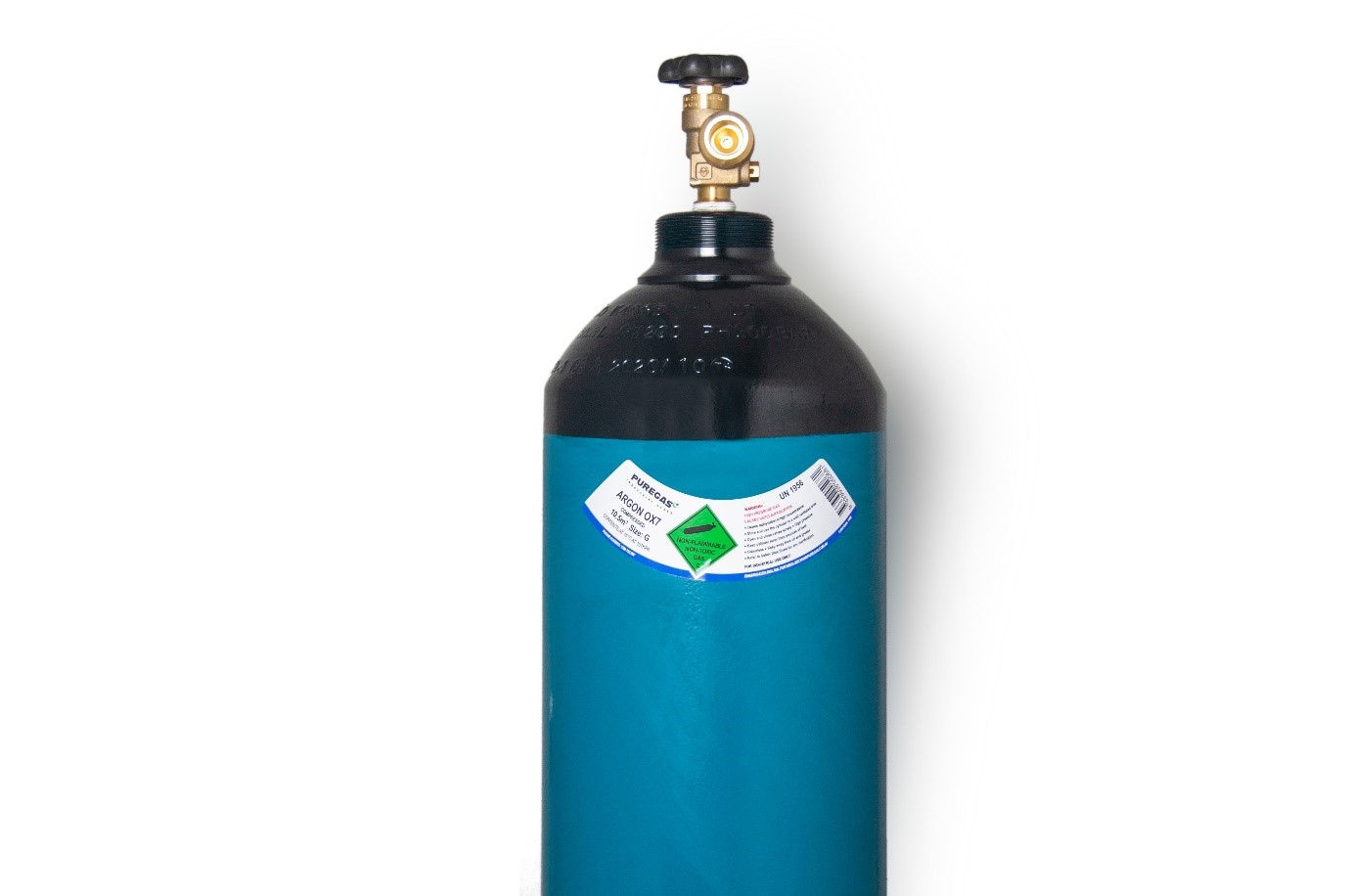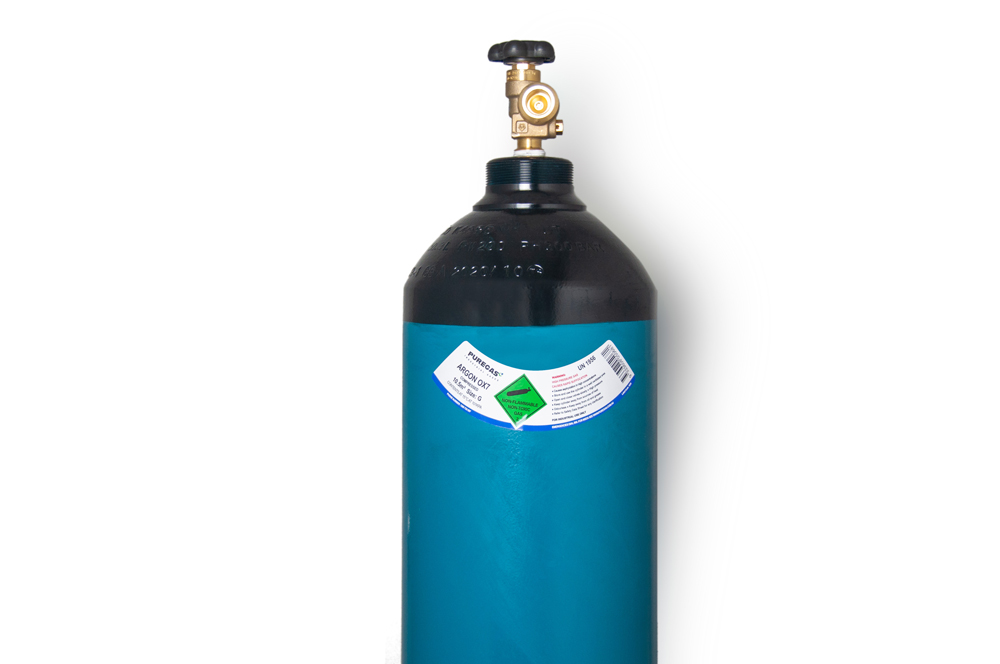

ARGON 0X7 is a mixture of 93% Argon with 7% Oxygen & a general-purpose shielding gas used widely for inert gas welding of mild steel.
ARGON 0X7, being 93% Argon, for all intents & purposes behaves as Argon if breathed, so it is effectively an asphyxiant.
Applications
A general-purpose shielding gas used widely for MIG welding of mild steel.
Product Overview
ARGON 0X7 is a mixture of 93% Argon with 7% Oxygen & a general-purpose shielding gas used widely for inert gas welding of mild steel.
ARGON 0X7, being 93% Argon, for all intents & purposes behaves as Argon if breathed, so it is effectively an asphyxiant.
Applications
A general-purpose shielding gas used widely for MIG welding of mild steel.
Hazards
As mentiond above, ARGON 0X7, being 93% Argon, for all intents & purposes behaves as Argon if breathed, so it is effectively an asphyxiant.
In confined poorly ventilated spaces, if allowed to build up and displace the air being breathed, will In high concentrations cause asphyxiation.
Initial symptoms include loss of mobility followed by loss of consciousness.
The affected person will most likely neither sense nor be aware of this which makes it essential that such a situation is to be avoided. It is however non-toxic and non-flammable.
Cylinder Sizes
|
Specifications |
E |
G |
|
Contents weight (m3) |
4.3 |
9.5 |
|
Cylinder water capacity (L) |
23 |
50 |
|
Cylinder pressure (101.325kPa @15°C) ** |
19000 |
19000 |
|
Cylinder colour |
Peacock blue (black top) |
|
|
Cylinder connection type |
Type 10 |
|
The volume and the pressure of the contained gas in the cylinders will be as specified in the above table.
**Cylinder contents pressure is referenced at 15 Deg Celsius. Hence, the pressure in the cylinders can vary depending upon the ambient temperature.
Important Info
Storage Handling & Leaks
- Make sure the cylinder or Pack when used is matched with the correct regulator and end connectors and of appropriate pressure rating.
- Inspect the regulator and cylinder valve connections to make sure that they are not contaminated with grease, oil, dirt, water or solvents. Never use grease or oil to lubricate regulators or cylinder valves as this will contaminate the gas.
- Open (Anti clockwise looking down at the hand wheel, directional arrows are on the hand wheel.)
- or close a cylinder valve (Clockwise looking down at the hand wheel, directional arrows are on the hand wheel.)
- by hand using moderate torque to open or close them. Too much closing torque can damage the cylinder valve seat.
- Only use set spanners or specific tools that are provided by the cylinder supplier to connect accessories.
- Multi-grips should never be used.
- Some regulators require a sealing washer in or on the inlet spigot.
- Check that this is present before fitting the regulator to the cylinder valve outlet
- Gas cylinders (particularly G & E size) are unstable & must be stored in pallets or racks when not in use & secured when in use by a strap or chain against a wall or secured by a suitable trolley with chain or strap.
- Use appropriate materials for chains. e.g. plastic coated wire cable, commercial straps, with tensioners,… etc., to secure cylinders.
- Gas cylinders should not be stored in public hallways or other unprotected areas
- Store out of direct sunlight and away from sources of heat and ignition; temperatures must not exceed 50 °C.
- Where cylinder caps are fitted to cylinders (i.e. instead of Cylinder Valve guards.) refit these cylinder valve caps to the Cylinder thread when the cylinder is not in use.
- Cylinders should be protected from damage. Do not store cylinders near elevators or gangways, or in locations where heavy-moving objects may strike or fall on them or knock the cylinder over.
- Cylinders must be stored on surfaces such as suitably drained concrete to prevent the base of the cylinder from rusting from standing in puddles for long periods. Cylinders should be stored, secured in premises to protect them from theft & against tampering by unauthorized individuals.
- Storage areas must be well-ventilated, cool, dry, and free from corrosive materials.
Storage Handling & Leaks
- Make sure the cylinder or Pack when used is matched with the correct regulator and end connectors and of appropriate pressure rating.
- Inspect the regulator and cylinder valve connections to make sure that they are not contaminated with grease, oil, dirt, water or solvents. Never use grease or oil to lubricate regulators or cylinder valves as this will contaminate the gas.
- Open (Anti clockwise looking down at the hand wheel, directional arrows are on the hand wheel.)
- or close a cylinder valve (Clockwise looking down at the hand wheel, directional arrows are on the hand wheel.)
- by hand using moderate torque to open or close them. Too much closing torque can damage the cylinder valve seat.
- Only use set spanners or specific tools that are provided by the cylinder supplier to connect accessories.
- Multi-grips should never be used.
- Some regulators require a sealing washer in or on the inlet spigot.
- Check that this is present before fitting the regulator to the cylinder valve outlet
- Gas cylinders (particularly G & E size) are unstable & must be stored in pallets or racks when not in use & secured when in use by a strap or chain against a wall or secured by a suitable trolley with chain or strap.
- Use appropriate materials for chains. e.g. plastic coated wire cable, commercial straps, with tensioners,… etc., to secure cylinders.
- Gas cylinders should not be stored in public hallways or other unprotected areas
- Store out of direct sunlight and away from sources of heat and ignition; temperatures must not exceed 50 °C.
- Where cylinder caps are fitted to cylinders (i.e. instead of Cylinder Valve guards.) refit these cylinder valve caps to the Cylinder thread when the cylinder is not in use.
- Cylinders should be protected from damage. Do not store cylinders near elevators or gangways, or in locations where heavy-moving objects may strike or fall on them or knock the cylinder over.
- Cylinders must be stored on surfaces such as suitably drained concrete to prevent the base of the cylinder from rusting from standing in puddles for long periods. Cylinders should be stored, secured in premises to protect them from theft & against tampering by unauthorized individuals.
- Storage areas must be well-ventilated, cool, dry, and free from corrosive materials.
Handling leaks
- Do not enter an area with high gas leakages without proper PPE or safety equipment.
- Approach the leak only if qualified to do so.
- Use readily available techniques like the soap bubble method to detect the leak.
- If closing the Cylinder Valve does not stop the leak, then relocate the cylinder to a safer well ventilated or outdoor location to allow the venting gas to escape & not build up. i.e. Per Puregas Safety Guidelines.
- Return the empty cylinder (Or Pack.) if the leak persists or after the gas has been safely vented.
- Make sure the cylinder is properly tagged indicating the nature, location & date of the leak together with a contact name & phone number for follow up by the gas supplier.



 Facebook
Facebook Instagram
Instagram